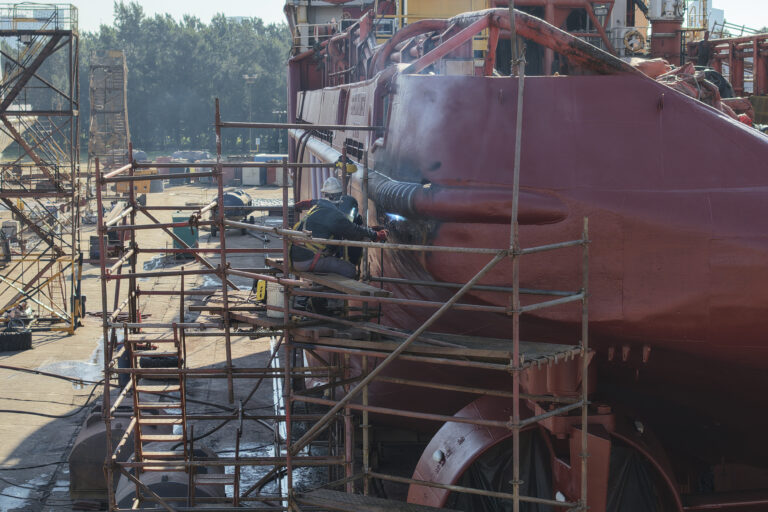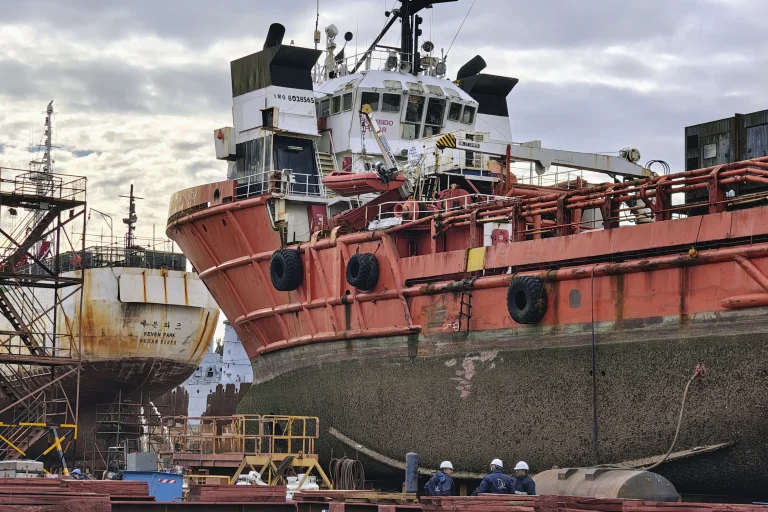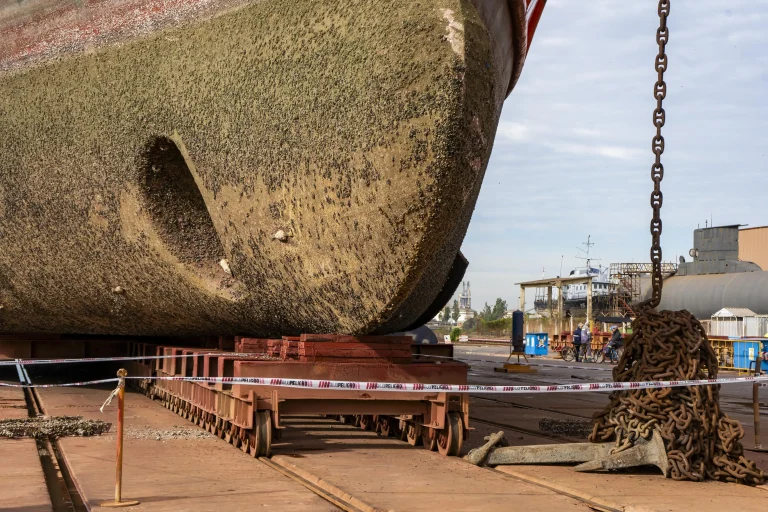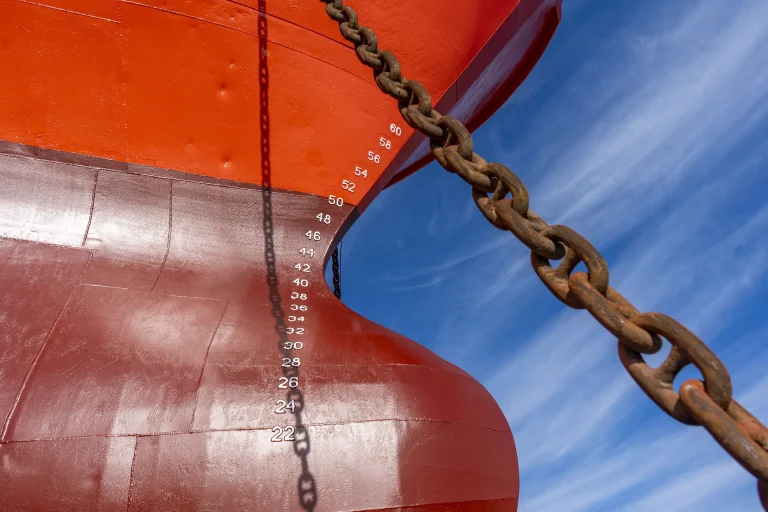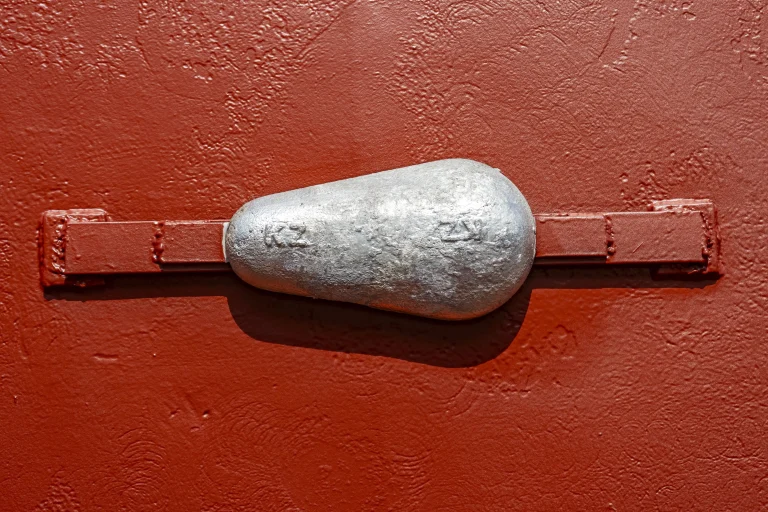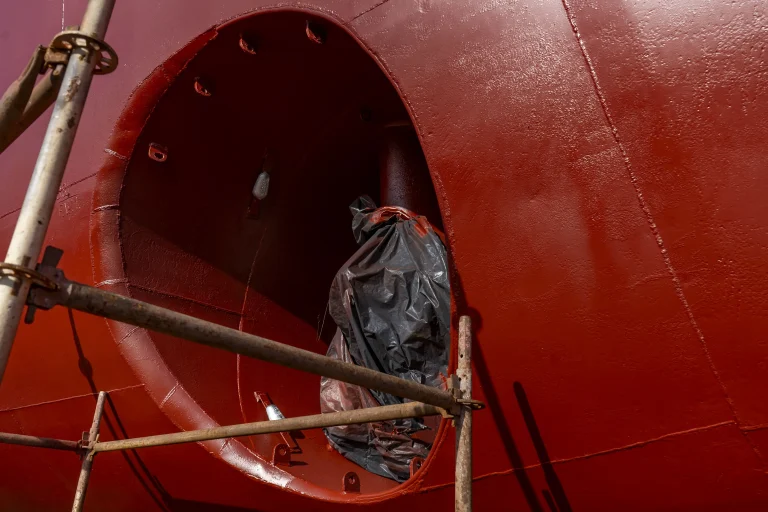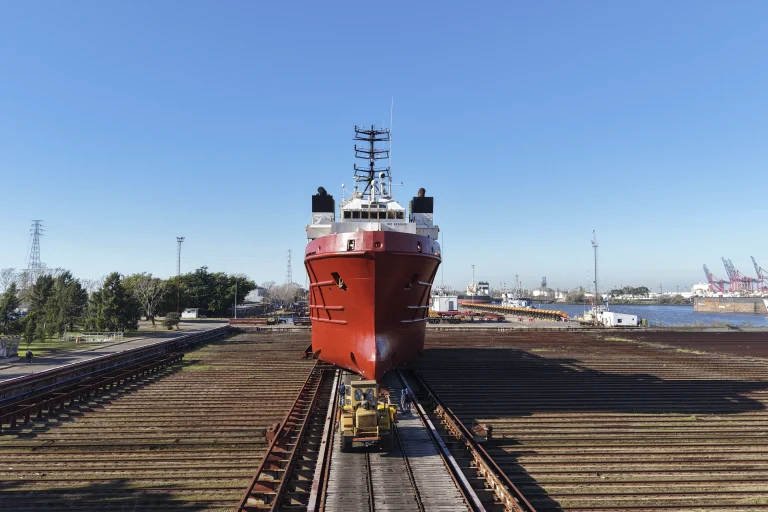With the coordinated intervention of the Mechanical, Boiler-Making, Syncrolift, Quality Control, Copper Shop, and Hull Maintenance departments, TANDANOR completed the repair works on the offshore support vessel Bremen Hunter and proceeded with its launch. The interventions included works on the hull, propulsion and steering systems, anchoring system, cooling system, and other structural elements of the vessel.
Regarding the hull, thickness measurements were carried out in accordance with the requirements of the Argentine Coast Guard (Prefectura Naval Argentina) and the shipowner, and steel renewals with their associated structures were executed in various areas. Fenders were also replaced, and non-destructive testing (NDT) was performed on welded seams as part of the quality control process. Hull and discharge valves were overhauled. Hull maintenance works included hydrojetting and sweeping with deep cleaning on both the underwater and topside areas. Four coats of paint were applied to both areas, and draft marks, load line, vessel names, tank markings, and other hull identifications were repainted. Finally, sacrificial anodes were renewed as part of the cathodic protection system.
Regarding the propulsion and steering system, the bow thruster and stern thruster systems were dismantled and reassembled, including transfer to the workshop and disassembly of their propellers for the corresponding overhaul. The sea chest gratings associated with these systems were also serviced, and the rudder clearances and propeller shaft drop were inspected.
As for the anchoring system, anchors and chains were unshackled and laid out. The chains were then calibrated, cleaned, and painted along with the anchors, including their markings. The chain stopper was dismantled and reassembled, and welding repairs were carried out on both port and starboard hawse pipes.
Regarding the cooling system, three sea chest strainer housings were manufactured, a pipeline connection was repaired, and a 2-inch diameter by 2,100 mm long pipe was built for the seawater cooling circuit.
